When we think of car enthusiasts, we often think of those with a thirst for power, speed, grip and loud engines. But the reality is quite different than that, because car enthusiasts come in all shapes and forms. (more…)
When we think of car enthusiasts, we often think of those with a thirst for power, speed, grip and loud engines. But the reality is quite different than that, because car enthusiasts come in all shapes and forms. (more…)
The SUV market in Malaysia is currently being flooded by various brands, most of them from China, so we do not blame you for not knowing which one to choose. If you’re looking for an SUV, it means you probably want something that can carry your family, or you might just be an SUV enthusiast.
The price point is the main factor that plays a huge role in selecting one. Which one of these big boys is affordable and can still make you feel like a boss? You have options like the Toyota Harrier, the Proton X90, the Chery Tiggo 8, and so on. However, there is a brand that is currently growing here: Jaecoo. I’m pretty sure you have seen a few Jaecoo J7s on the road.
If you didn’t already know, Jaecoo is the luxury division of Chery. Now, the naming of these models might be confusing, as Omoda is associated with the Chery Omoda 5 and E5. But just recently, Jaecoo unveiled the Omoda C9, a coupé SUV under the Jaecoo name and not Chery. This is because the C9 is meant to be a luxurious model, which Jaecoo handles.
Futuristic Design
Taking cues from the Omoda 5, the C9 is a more refined and mature-looking SUV. It also displays a futuristic and luxurious look that would definitely turn heads. The section that attracted me was the front design. It has a mean and commanding look that would definitely scare me on highways at night. It features a unique diamond matrix grille, sigma-inspired daytime running lights, and adaptive LED headlights.
Moving along to the side, you’ll find a sleek, distinctive look with lines and curves that complement the overall futuristic appearance. You will also notice the 20-inch multi-blade alloy wheels and high-performance Michelin tires. The rear features LED tail lights and a tailgate with an auto-sensing function.
Comfortable and Luxurious Interior
Step inside, and you’ll know why the C9 is under the Jaecoo brand. It features active ambient lighting, a 24.6-inch HD display, and a spacious centre console equipped with wireless mobile charging and air vents.
The cabin is enhanced with premium soft-touch leather finishes, three-zone air conditioning with an air quality system, and a fragrance dispenser for added comfort.
If you’re built slightly bigger than the average human, just like this writer, you won’t have to worry about space because, during our drive, I was as comfortable as ever. To enhance this comfort experience, both the driver and passenger seats are ventilated, allowing us to cool our bottom and back.
Powerful Petrol Engine
The C9 comes with the whole package, including power. It is powered by a 2.0 TGDI inline four-cylinder petrol engine, delivering 257hp and 400Nm of torque. Yes, that is a lot of power for an SUV coupé.
This amount of power can be put down on any terrain because the C9 comes with not only Eco, Normal, and Sport modes, but also Snow, Mud, Sand, and Off-road modes, which means you can probably get out of most unwanted situations.
Crazy Amount of Tech and Features
Once you start to mess around with all the options and features available on the 24.6-inch HD display, you’ll feel a little overwhelmed. Why? Because there are so many things to fiddle with. One of them is your different drive modes; then you have the HVAC, seat ventilation, fragrance drive mode memo, wiper sensitivity, maintenance tips, suspension linking to drive modes, and many more.
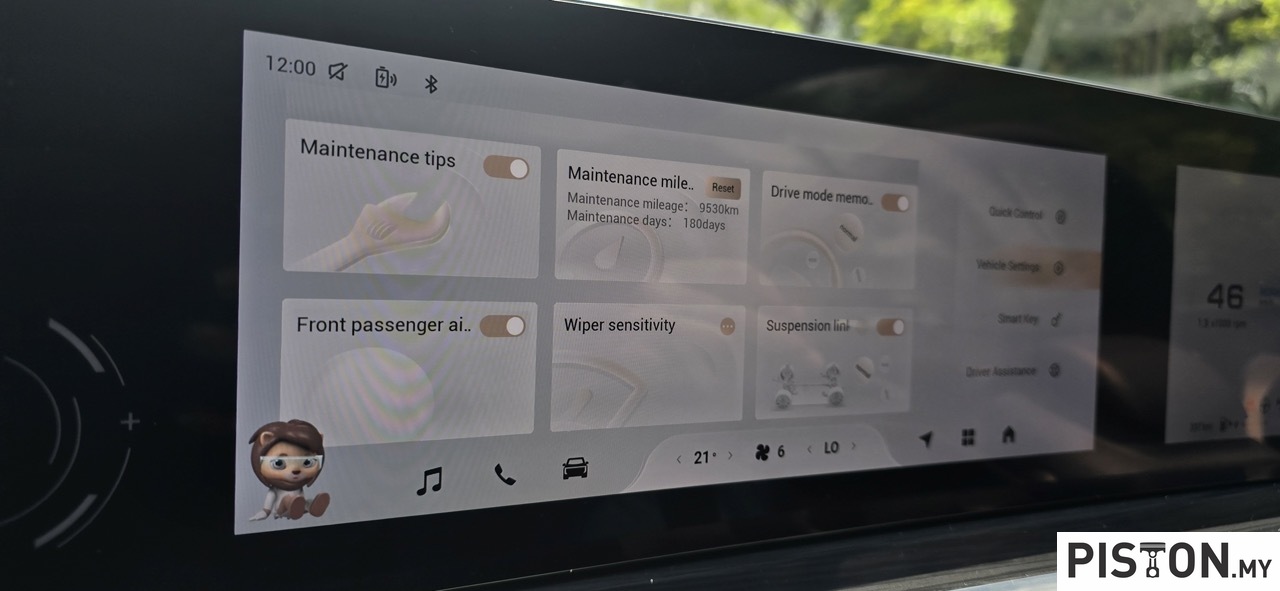
Thankfully, not everything is only accessible through the screen; you also get physical buttons. Yes, in a 2024 vehicle, there are buttons such as the air conditioning knobs, the sunroof controls, and the drive mode selection knob.
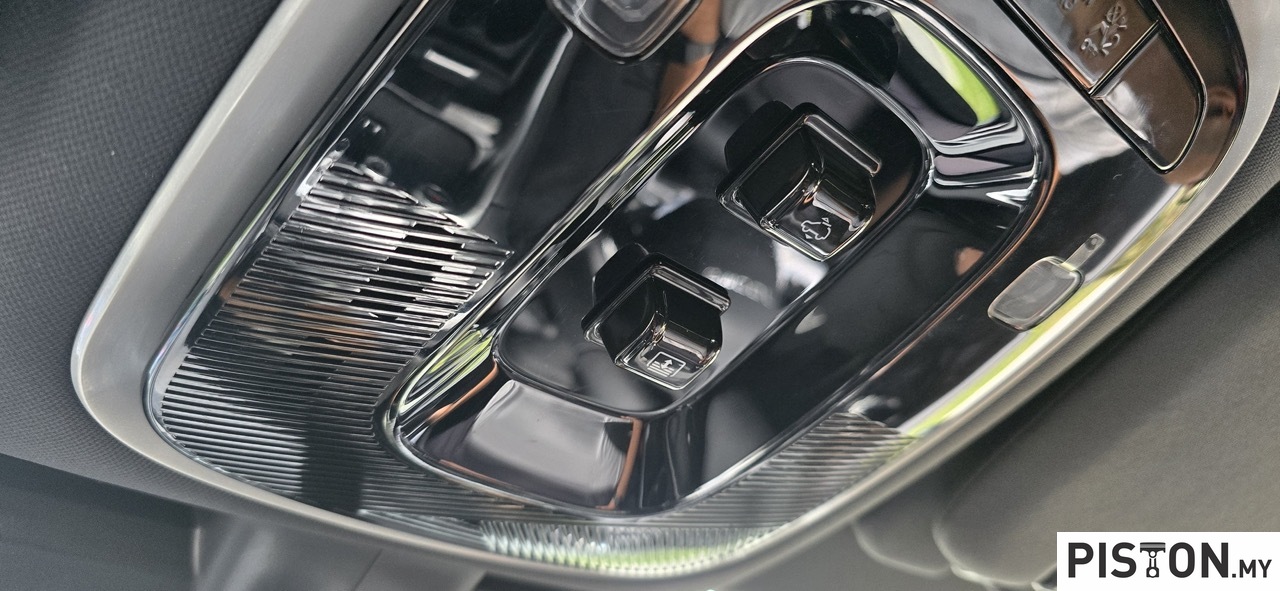
Gear changes can be done via a lever behind the steering wheel, similar to a German brand. You also get paddle shifters just for the fun of it and a push-to-start button.
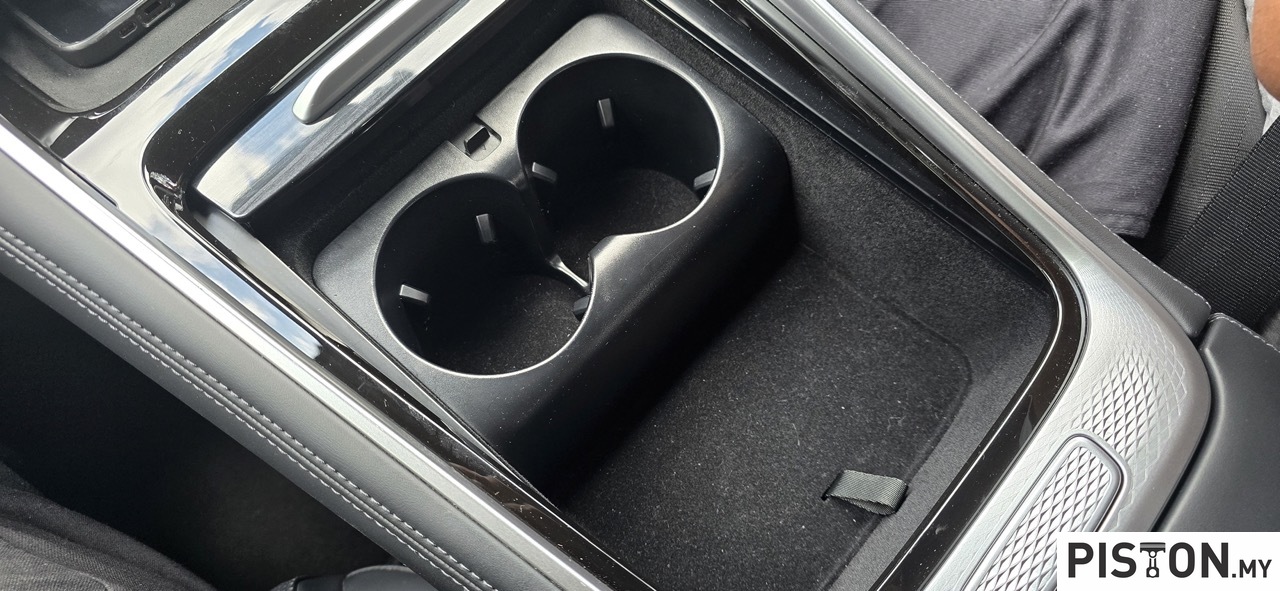 You also get a decent amount of storage space at the center console, and the armrest that houses a cooled compartment can be opened up to store your cold drinks. Another cool feature is the two options given to open the doors. You get the standard manual lever that you pull to release the door and a button that activates the electrical door release.
You also get a decent amount of storage space at the center console, and the armrest that houses a cooled compartment can be opened up to store your cold drinks. Another cool feature is the two options given to open the doors. You get the standard manual lever that you pull to release the door and a button that activates the electrical door release.
Safety at Its Finest
Safety is at the forefront of the C9’s design, with Continuous Damping Control (CDC) providing real-time adjustments based on road conditions to ensure a comfortable ride. The SUV is also equipped with level 2.5 Advanced Driver Assistance Systems (ADAS), including Blind Spot Detection (BSD), Lane Departure Prevention (LDP), and Emergency Lane Keep Assist (ELKA). All these can be accessed through the main screen. It’s a good thing that we can adjust and set them to the way we want because not all of us use certain features.
You can also adjust the braking modes that function depending on the drive mode the SUV is in. There is also a built-in 540-degree around-view monitor and digital video recorder (DVR) for enhanced visibility of obstacles and blind spots.
Is the Ride Comfortable?
Comfort-wise, we have nothing to complain about because the noise, vibration, and harshness (NVH) levels are decent. The C9’s adaptive suspension system, featuring MacPherson struts at the front and a multilink setup at the rear, enhances the comfort levels while driving. You don’t really feel all the bumps and imperfections that our Malaysian roads have to offer.
However, the only thing that was bugging us the entire time was the harshness of the engine sound. Each time you come to a stop and step on the gas again, the roaring sound of the engine is noticeable in the cabin. It’s a minor issue, and if you have songs blasting in the background through the Sony speakers, you probably won’t notice it.
The braking, however, could be improved. The gap between the brake lever and the biting point takes some time, as we tested a bit of hard braking and slow braking. So if there is a need for you to hit the brakes, you may need to do it faster.
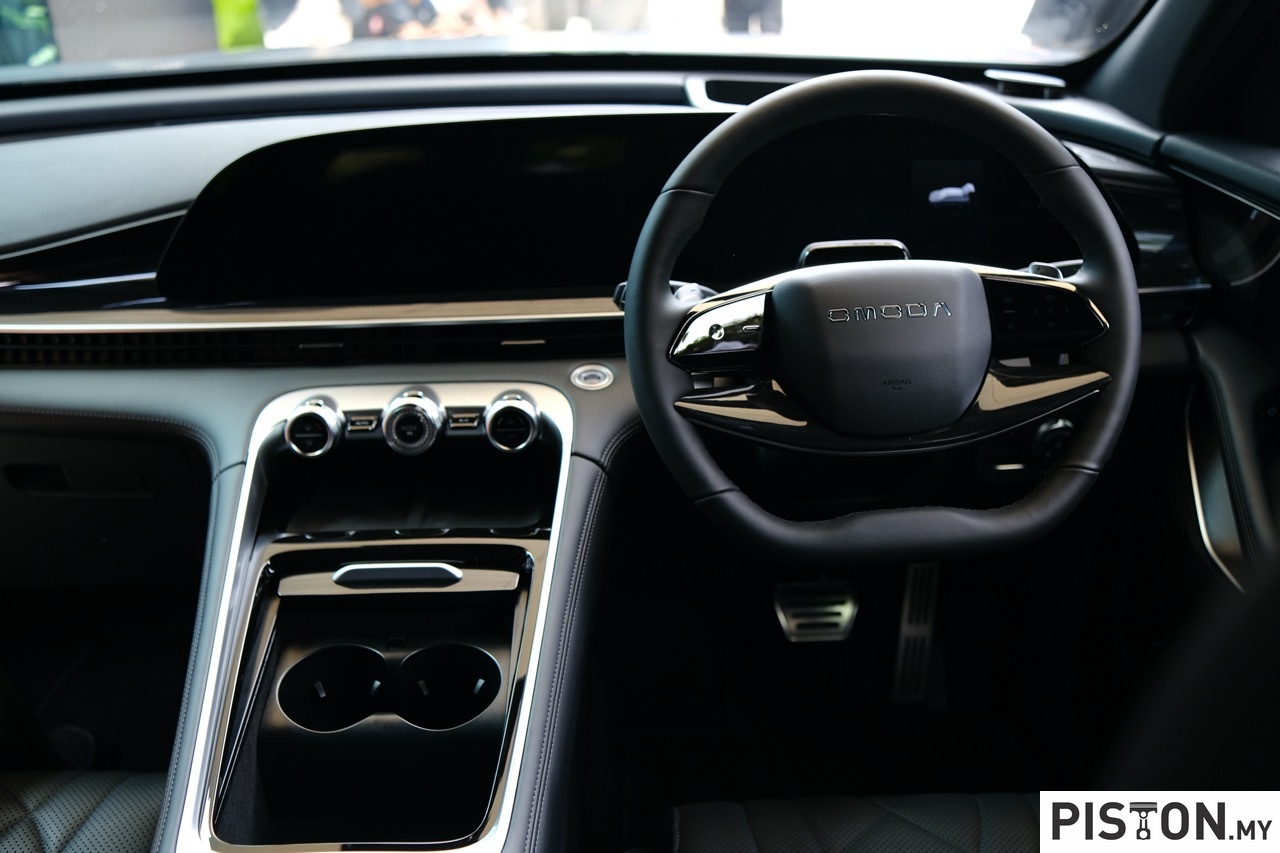
Rear seat passengers do not have to worry about comfort either; there is an ample amount of legroom and headroom available. You have air conditioning vents in the middle and at the side pillars. Because of how smooth the ride feels, you’ll be able to sleep like a baby during long drives.
How Affordable is Affordable?
The C9 has not been officially launched yet. According to Jaecoo, the official launch will take place by the end of this year. Compared to the C9’s competitors, in terms of features, technology, and pricing, there’s no question why you shouldn’t consider getting one. Jaecoo has opened registration of interest for the Omoda C9, with the 2WD variant priced at around RM185,000 and the AWD variant estimated at RM195,000.
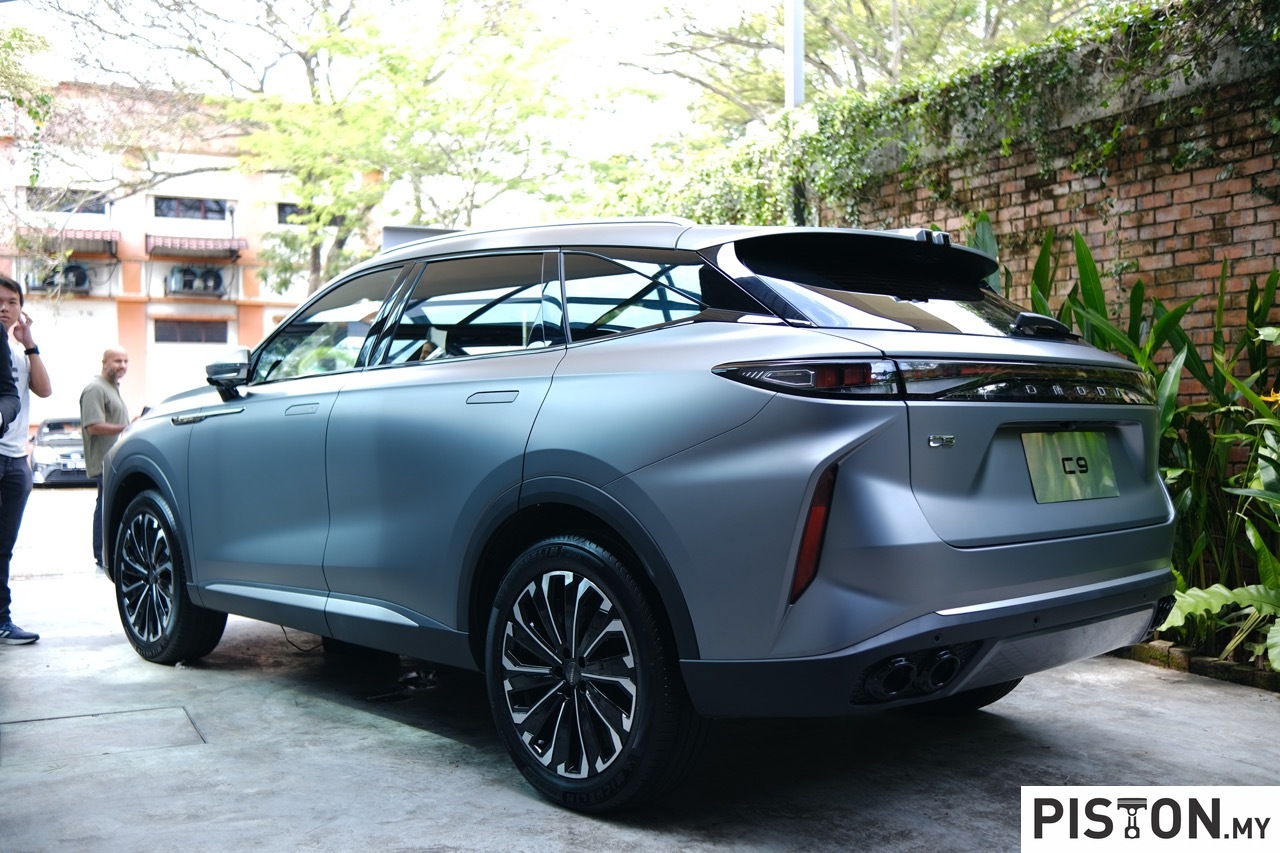 In our books, that’s a really good price range for the package that the C9 offers.
In our books, that’s a really good price range for the package that the C9 offers.
Specifications:
Engine: 2.0-liter turbocharged petrol four-cylinder
Power: 257hp
Torque: 400Nm
Transmission: Eight-speed torque converter automatic
Suspension: MacPherson struts in front and multi-link setup at the back with Continuous Damping Control (CDC) adaptive suspension
Price (as tested): Estimated at RM195,000
We like: Futuristic look, spacious, luxurious, and comfortable interior
We don’t like: The braking system could be improved
In case you didn’t know, cars are categorised into various segments based on their sizes. The list of segments begins with the A-segment which comprises the smallest cars in the market such as the Perodua Axia, Proton Saga, Perodua Bezza, and the Hyundai i10 just to name a few.
Moving up the ladder, we have the B-segment which comprises models like the Honda City, Toyota Vios, and the MG5, followed by the C-segment which the Proton S70 here is a part of, alongside models like the Honda Civic, Toyota Corolla Altis, and the Mazda3.
If we keep going, there’s the D-segment with mid-sized executive sedans like the Honda Accord and Toyota Camry, the E-segment with cars like the Mercedes-Benz E Class, limousines such as the BMW 7-Series, sports cars, MPVs, and SUVs.
While most of these models compete with each other in the same segment, there are a few special models such as the Proton S70 here which also compete with cars in other segments.
When it comes to people movers, there are a number of good choices for Malaysians. Our vibrant automotive market has solid foundations and a good part of that stems from our business-friendly environment that seems to attract new brands on a near monthly basis.
But there are brands that have been entrenched in the Malaysia for decades, and among those brands is Mitsubishi Motors Malaysia (MMM). Though it may have been operating in the background for the past couple of years, the Japanese brand has consistently been in the top five of the national sales charts, and that too with a two car portfolio. (more…)
When the diesel subsidies were removed, everyone expected the pick-up truck segment to take a significant hit. While pick-up trucks are great workhorses for all industries, a significant slice of the segment bought pick-up trucks for lifestyle purposes. Whether it was for hiking, fishing or for general use, pick-up trucks are a great companion.
So, when the subsidies were removed, the sales of pick-up trucks were expected to slow. And while some did off-load their trucks or cancelled their planned purchase, the segment did not slow down as drastically as expected. In fact, the segment is still vibrant, just not as before. (more…)
With so many different marques and models these days, cars are beginning to look and feel the same. Particularly electric vehicles with their minimalist interiors and gargantuan screens, almost all of them use the same design language.
But occasionally a brand will introduce a treasure of properly built cars. No, we are not talking about electric vehicles, we are talking about pure petrol-guzzling masterpieces which we enjoy driving.
Let’s take Toyota for instance. They have been known to make reliable and fun cars since the beginning of time. One of the most popular models that any car enthusiast will know is the Toyota Supra. However, one other model is as iconic or maybe even more iconic than the Supra, the Toyota AE86.
This car will always have a special place in our hearts, and it has become a unicorn of sorts. The AE86, especially with the Initial D livery, which is from a Japanese street racing manga series, will always turn heads anywhere it goes.
But after it was discontinued, fans and enthusiasts were left wondering if Toyota would ever bring back the 86 nameplate with a modern twist. In 2011, the Toyota made many dreams come true when the 86 made a comeback with its debut at the Tokyo Motor Show and the fans went wild! The 2+2 sports car is the product of a joint development between Toyota and Subaru which named their car, the BRZ.
There are subtle differences between the two which help differentiate them such as the bumper, wheels and light designs. But that is a topic for another day. We are here to talk about the current generation Toyota GR86, which is the sportier and more refined version of the GT86.
For starters, this is an entry-level sports car and if you are in the market for a fun car on a budget, this would be the ideal one.
Under the hood, it runs a 2.4L horizontally opposed four-cylinder boxer engine that produces 237PS and 250Nm of torque. Now that does not sound like a lot for a sports car but it is good enough. Not a lot of people get that this car was not built for speed but rather for pure driving pleasure.
It has sufficient power to slingshot you out of corners and some quick overtaking on highways. It does 0-100km/h in 6.3 seconds with the manual transmission and 6.8 seconds with the automatic transmission. The version we tested was the automatic with paddle shifters. Now I know fanboys are going to say that the manual variant is much more fun compared to the auto one and I would agree.
However, the automatic transmission can be fun as well. It is still a GR86 after all.
As fun as this sports car can be, it can also double as a daily driver. For starters, the GR86 does not have a loud exhaust which means there is no droning noise inside the cabin that can annoy you on long drives or when idling.
Toyota added a neat little feature to still give you the thrill of flooring it. As you reach certain RPMs a symphony of engine sounds is fed to the insides of the cabin through the speakers. It is augmented and though it may be fake, we liked it. However, if you’re not a fan of it, you can simply take the car to a mechanic and unplug the wiring that enables those sounds to come through.
There are a few different drive modes available which are normal, sport, snow and track mode. The snow mode is basically an off-road mode if you ever happen to drive on dirt or mud, it reduces wheel spin which keeps the wheels from slipping and sliding. Turn it to sports mode and the throttle mapping changes a little bit which sharpens the throttle and allows you to keep it at high revs. This is best used when you’re on an open highway and have an itch to go a little faster.
Track mode is a whole different level. Switching it to track mode will change the digital instrument cluster to a progressive visual rev counter to get you into that racing mentality. But, you should really just use this on a track or a controlled environment. This mode allows you to do what the car is meant to do. You can throw it around corners and let the rear end kick out which allows you to drift into and out of corners.
The 18-inch matte black alloy rims are wrapped with Michelin Pilot Sport 4 tyres as standard which are not bad but most people who buy a GR86 usually swap them out. The road noise on the Pilot Sport 4 can be very noticeable at times but not to a point where it becomes annoying. Performance-wise, it is acceptable as it keeps the car planted in corners and does not skid during hard acceleration.
The suspension set-up on the front has a MacPherson Strut with stabiliser bar and the rear is made up of a Double Wishbone stabiliser which is a solid setup for the GR86 because of how much the car can handle during extreme conditions. Let’s just say, this car took the corners of Ulu Yam like a champ! However, the only complaint about this is that you can feel every bump on the road.
But thankfully, the seats are comfortable enough that this did not bother us. We can guarantee that the Ultrasuede leather seats are comfortable because this writer got stuck in a 10-hour traffic jam on the way to Penang! Now the rest of the interior is what I love about this car. There are no unnecessary screens and functions that you find in most cars nowadays and there are physical buttons for all the necessities. The touchpoints feel solid, are of good quality and nothing feels cheap or flimsy.
You get an eight-inch display audio system with wired Apple CarPlay and Android Auto and dual-zone automatic climate control system with dual LCD toggle displays which is more than enough technology needed in a sports car. Everything is straightforward and easily accessible.
The USB ports are located inside the centre armrest for some reason. My thoughts are that if they had placed the drive mode buttons somewhere below the air conditioning controls, they could have freed up some space for the USB ports to go there. But it is not a big issue, it still works.
Now the big question is, can you fit rear passengers? The short answer is no. There is barely enough space to fit a kid at the back let alone grown adults. The only way to utilise the rear seats is to either use them for baby seats because it does have ISOFIX points, put small bags, and items or fold them down to get more boot space.
Speaking of boot space, it has 226 litres of it, which is decent enough for a small sized sports car. We managed to fit two luggage, a laptop bag a few other grocery-sized bags. But as mentioned before, if you need more space, you can always fold the rear seats.
With all that weight that the car is carrying, us included, was the fuel efficiency good or bad? We can say that this car is perfect for long drives and daily use around the city. It has a 50-litre tank and we travelled from Subang Jaya to Penang to Ipoh and back to Subang with only three fuel stops. We got an average of 11.7L/km which was not that bad given the fact that we were stuck in traffic most of the time, and boxer engines are not exactly known to be fuel efficient.
As for safety, Toyota never lacks in this because even for sports cars, all the essential safety features are there. You get blind spot monitoring, lane departure alert, pre-crash system which helps you stop the car before, well, crashing into anything. You even get adaptive cruise control and seven airbags.
So, if you happen to be looking to get into some sports car action, this may very well be a good car to start with, that is, if your pockets are deep enough. Because with all these amazing features and just the car being an icon of the automotive world, it does not come cheap. The manual transmission variant is priced at RM295,000 and if you opt for the automatic transmission, it will cost you RM305,000.
Will we pay this much for a GR86? Well, as a kid, I dreamt of owning a red sports car and if I get the chance, yes, I will buy a Toyota GR86.
Specifications
Engine: 2.4L horizontally opposed 4-cylinder boxer
Power: 237PS
Torque: 250Nm
Transmission: 6-speed Automatic with Paddle Shifters
Price (as tested): RM305,000.
We like: Performance, Comfort, Exterior and Interior Looks
We don’t like: Not parked in our garage.
Heritage, as it would seem, is an important thing in the automotive business. It is quite common to hear or read about car companies talking about their achievements through the years either through an advertisement somewhere or through a carefully curated press release.
These chest thumpers usually centre around achievements in the world of motorsports, safety technologies, performance, design and sales figures. (more…)
“What do you think of Haval? The cars are quite cheap, and I am thinking of buying my mother one,” said the Managing Director of one of the companies I used to work for over a decade ago.
“It has everything she needs in a car, and it is quite well priced, it makes more sense than a Proton,” he continued.
This conversation took place back in the early 2010s, a time when barely anyone was talking about cars from China. And the companies that did import them only did so half-heartedly, with little in the form of aftersales support.
Fast forward a little more than a decade and the global automotive landscape is an entirely different one. (more…)
Some of us are a superstitious bunch. Whether you are a non-believer or a hardcore believer, there are some belief’s that we hold on to. Perhaps it is something that has been passed down through the generations.
Or perhaps it is because Malaysia is a wonderful melting pot of cultures and traditions which, over hundreds of years, have resulted in our believes being passed on from one culture to another.
I am not sure about you, but I still turn my rear-view mirror the other way if I am driving down a dark road all by myself at night. But that is partly due to the iconic Malay horror movie – “jangan pandang belakang (don’t look back).
And then there is the occasional night drives on Karak highway where I still tend to look out for that rare yellow beetle. But that is folklore, I know. (more…)
For decades, Volvo had led the way when it comes to technology related to passenger and vehicular safety. The company took safety so seriously that it released the patent for the seat belt which its engineer invented back in 1959, an act that ultimately saved countless lives all over the world.
Volvo is as iconic as some of the most well-known brands, and it does it all in a typical Scandinavian way – understated and un-obnoxious. Those who drove a Volvo rarely drive anything else. And even if they do, they often return to Volvo at one point or another. (more…)
© Copyright – Piston.my 2024 Trademarks belong to their respective owners. All rights reserved